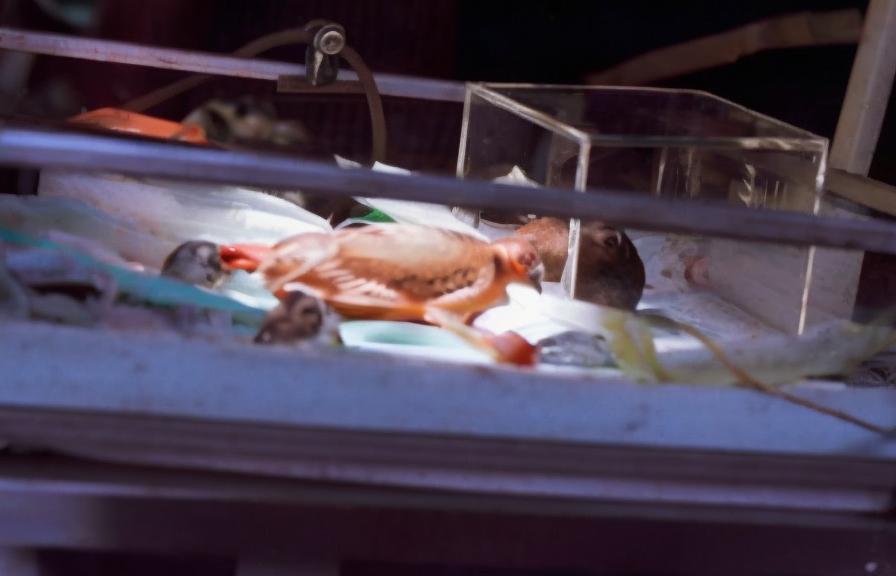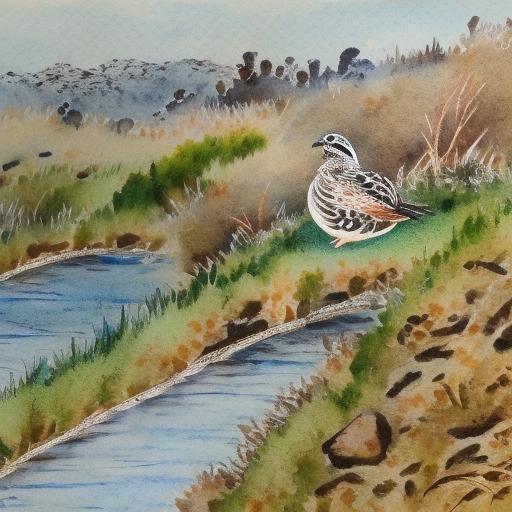Jap quail, also known as Japanese quail, are small birds that are commonly bred for their eggs and meat. They are relatively easy to breed and can be a great addition to a small farm or backyard setup. Before starting a breeding program, it’s important to understand the basics of Jap quail breeding. Jap quail reach sexual maturity at around 6-8 weeks of age, and they can start laying eggs as early as 7-8 weeks old. The breeding season for Jap quail typically starts in the spring and lasts through the summer months. During this time, the birds will be more active and receptive to breeding.
When it comes to breeding, Jap quail are typically monogamous, meaning they will pair up with one mate and remain loyal to that mate throughout the breeding season. However, it’s important to note that not all pairs will be successful breeders, and some may need to be separated and paired with different birds to encourage successful breeding. Understanding the natural breeding behaviors of Jap quail is essential for creating a successful breeding program.
Key Takeaways
Selecting the Right Breeding Stock
Selecting the right breeding stock is crucial for a successful Jap quail breeding program. When choosing breeding stock, it’s important to select birds that are healthy, active, and free from any genetic defects. Look for birds that have bright, clear eyes, clean feathers, and a good body condition. Avoid birds that appear lethargic, have disheveled feathers, or show signs of illness. It’s also important to select birds that come from a reputable breeder or source to ensure that they have been bred for good health and productivity.
In addition to physical health, it’s also important to consider the genetic diversity of the breeding stock. Inbreeding can lead to genetic defects and decreased fertility, so it’s important to avoid breeding closely related birds. When selecting breeding stock, aim to choose birds from different bloodlines to ensure genetic diversity and overall health of the offspring. By carefully selecting the right breeding stock, you can set the foundation for a successful and productive Jap quail breeding program.
Creating the Ideal Breeding Environment
Creating the ideal breeding environment is essential for encouraging successful breeding in Jap quail. The breeding environment should mimic the natural habitat of the birds and provide them with the necessary resources for mating and egg laying. Start by providing a spacious and well-ventilated coop or aviary that allows the birds to move around freely and engage in natural behaviors. The coop should also have nesting boxes or areas where the birds can lay their eggs in privacy.
In addition to providing a suitable living space, it’s important to ensure that the breeding environment is kept clean and free from any potential stressors. Regularly clean the coop or aviary to remove droppings and soiled bedding, and provide fresh water and high-quality feed to support the birds’ reproductive health. It’s also important to provide ample natural light or artificial lighting to mimic the changing seasons and encourage breeding behavior. By creating an ideal breeding environment, you can help promote successful mating and egg laying in your Jap quail flock.
Managing Breeding Pairs
Managing breeding pairs is an important aspect of Jap quail breeding, as it can greatly impact the success of your breeding program. When introducing breeding pairs, it’s important to observe their behavior and ensure that they are compatible with each other. Some pairs may not get along or may not be interested in mating, so it’s important to monitor their interactions and make adjustments as needed. If a pair is not showing signs of successful mating, consider separating them and pairing them with different birds to encourage successful breeding.
It’s also important to provide adequate nesting areas for the breeding pairs to lay their eggs. Nesting boxes or areas should be secluded and provide a sense of privacy for the birds to lay their eggs comfortably. Additionally, it’s important to monitor the eggs laid by each pair and keep track of their fertility and hatch rates. By managing breeding pairs effectively, you can increase the likelihood of successful mating and egg production in your Jap quail flock.
Recognizing Signs of Successful Breeding
Recognizing signs of successful breeding is essential for monitoring the progress of your Jap quail breeding program. One of the most obvious signs of successful breeding is the presence of eggs in the nesting boxes or areas provided for the birds. Once the eggs are laid, it’s important to monitor them for fertility by either candling them or using an egg candler to check for signs of embryo development. Fertile eggs will show signs of blood vessels and embryo growth when candled, indicating successful mating and fertilization.
In addition to monitoring egg production, it’s also important to observe the behavior of the breeding pairs. Mating behavior such as courtship displays, vocalizations, and physical interactions between the pairs can indicate successful mating and bonding. It’s also important to monitor the overall health and condition of the birds, as successful breeding pairs will exhibit good health and vitality. By recognizing signs of successful breeding, you can track the progress of your Jap quail breeding program and make adjustments as needed to support continued success.
Caring for Jap Quail Chicks

Caring for Jap quail chicks is an important aspect of maintaining a successful breeding program. Once the eggs hatch, it’s important to provide a warm and safe environment for the chicks to grow and develop. A brooder with a heat source such as a heat lamp or heating pad should be set up to provide warmth for the chicks, as they are unable to regulate their body temperature in the early days of life. The brooder should also be equipped with clean bedding, fresh water, and high-quality chick starter feed to support the chicks’ growth and development.
It’s also important to monitor the health of the chicks closely and address any issues that may arise. Common issues in young chicks include pasty butt, which can be treated by gently cleaning the affected area with warm water and providing probiotics to support gut health. Additionally, it’s important to provide adequate space for the growing chicks as they mature, ensuring that they have enough room to move around and engage in natural behaviors. By caring for Jap quail chicks with diligence and attention to their needs, you can support their healthy growth and development.
Troubleshooting Common Breeding Issues
Despite your best efforts, you may encounter common breeding issues when raising Jap quail. One common issue is low fertility or poor hatch rates, which can be caused by factors such as inadequate nutrition, stress, or genetic issues. To address this issue, ensure that your breeding stock is receiving a balanced diet with adequate protein and nutrients to support reproductive health. Additionally, minimize stressors in the environment by providing a clean and comfortable living space for the birds.
Another common issue is aggressive behavior between breeding pairs, which can lead to injury or decreased mating success. If you notice aggressive behavior between pairs, consider separating them and introducing them to different mates to encourage more harmonious pairings. It’s also important to monitor the overall health of your flock and address any signs of illness or disease promptly to prevent potential breeding issues.
In conclusion, understanding the basics of Jap quail breeding is essential for establishing a successful breeding program. By selecting the right breeding stock, creating an ideal breeding environment, managing breeding pairs effectively, recognizing signs of successful breeding, caring for Jap quail chicks, and troubleshooting common breeding issues, you can support healthy reproduction and productivity in your Jap quail flock. With careful attention to detail and proactive management practices, you can enjoy a thriving Jap quail breeding program on your farm or homestead.
If you’re interested in learning more about poultry care, you might also want to check out this informative article on how to insulate a chicken coop. Proper insulation is crucial for maintaining the health and well-being of your chickens, and this article provides valuable tips and insights on creating a comfortable and safe environment for your feathered friends.
FAQs
Meet Walter, the feathered-friend fanatic of Florida! Nestled in the sunshine state, Walter struts through life with his feathered companions, clucking his way to happiness. With a coop that’s fancier than a five-star hotel, he’s the Don Juan of the chicken world. When he’s not teaching his hens to do the cha-cha, you’ll find him in a heated debate with his prized rooster, Sir Clucks-a-Lot. Walter’s poultry passion is no yolk; he’s the sunny-side-up guy you never knew you needed in your flock of friends!







